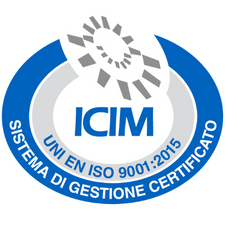
The wastewater treatment allows to cope with two central issues in our modern and industrialized society: the scarcity of water and the proper management of waste products of industrial and urban systems.
Moreover, it represents a long-term investment, economically advantageous and with multiple benefits.
Wastewater purification is a process consisting of a combination of chemical, physical and biological phases and processes through which water is cleaned of all undesirable substances, such as impurities, chemicals, organic and inorganic micropollutants.
The result is a waste product called “sludge” and treated water (“clarified wastewater”) suitable for subsequent distribution.
Other than being disposed of in the environment harmlessly and respecting all legal limits, the water so obtained can have a “new life” thanks to its reuse in several fields such as agriculture and industry.
In order to be used for one purpose or another, the final water must have determined characteristics and undergo specific compulsory treatments, governed by standards and regulations, which vary mainly according to the type of water and its initial level of impurities.
Some of the treatments to which water must and/or can be subjected are:
– Screening: mechanical filtration operation aimed at the selective removal of coarse sedimentable and non-sedimentable solids;
– Desanding: necessary in case of inorganic materials in suspension with a diameter greater than 0.2 mm to avoid damage to equipment;
– De-oiling: necessary in case of presence of oils or greases that may have a negative impact on subsequent treatments;
– Equalization and homogenization: aimed at leveling the peaks of flow (equalization) and peaks of pollution (homogenization) to facilitate subsequent treatments;
– Primary sedimentation: preparatory phase for subsequent biological treatment, allows a reduction of BOD around 30%;
– Biological treatment: performed by microorganisms capable of metabolizing chemical compounds, it is the most important phase of the purification cycle because it involves the biodegradation of all organic substances;
– Filtration: mechanical treatment to remove bacteria, organic substances, ammonia compounds, nitrates, phosphates, polyphosphates;
– Disinfection: aimed at eliminating all pathogenic substances.
” Sludge” management also involves a variety of treatments such as:
– Thickening: to reduce the volume of the sludge by increasing its solids content;
– Biological stabilization: transformation of the organic content into simpler stable substances;
– Conditioning: preparatory treatment for the subsequent dewatering phase to increase the filterability of the sludge;
– Dewatering: to reduce the volume of sludge and optimize costs associated with further treatment and disposal.
In addition to the operation of wastewater treatment for public purposes, companies can also have their own wastewater treatment plant.
For companies whose activities involve the intensive use of water in contact with pollutants, this possibility is an obligation.
This investment provides important benefits including:
– Reduction in expenses otherwise required for water disposal by third-party companies
– Autonomous management of purification in line with specific needs
– Possibility of reusing the purified water for numerous activities, optimizing the use of energy and water consumption
– More sustainable management of business activities
Because of the multiplicity of functions and areas of application, each situation requires a careful study to evaluate which of the many technologies and instruments (grids, bridges, filters, sand removers, thickeners, etc.) can be the most effective to achieve the established objectives.
FIND MORE ABOUT INNOVATIVE MACHINES AND TECHNOLOGIES FOR WATER AND SLUDGE TREATMENT
OR CONTACT US TO DEFINE TOGETHER THE BEST SOLUTION FOR YOUR NEEDS
Gallery
Since 1985 Idromet Sider offers an extensive selection of innovative and high-quality certified products and solutions for aqueducts, gas pipelines, sewerages, water treatment plants and industrial plants.






